グリム童話『白雪姫』あらすじと感想~ディズニーの原作!原作との違いからわかるディズニーの驚くべき改変とは
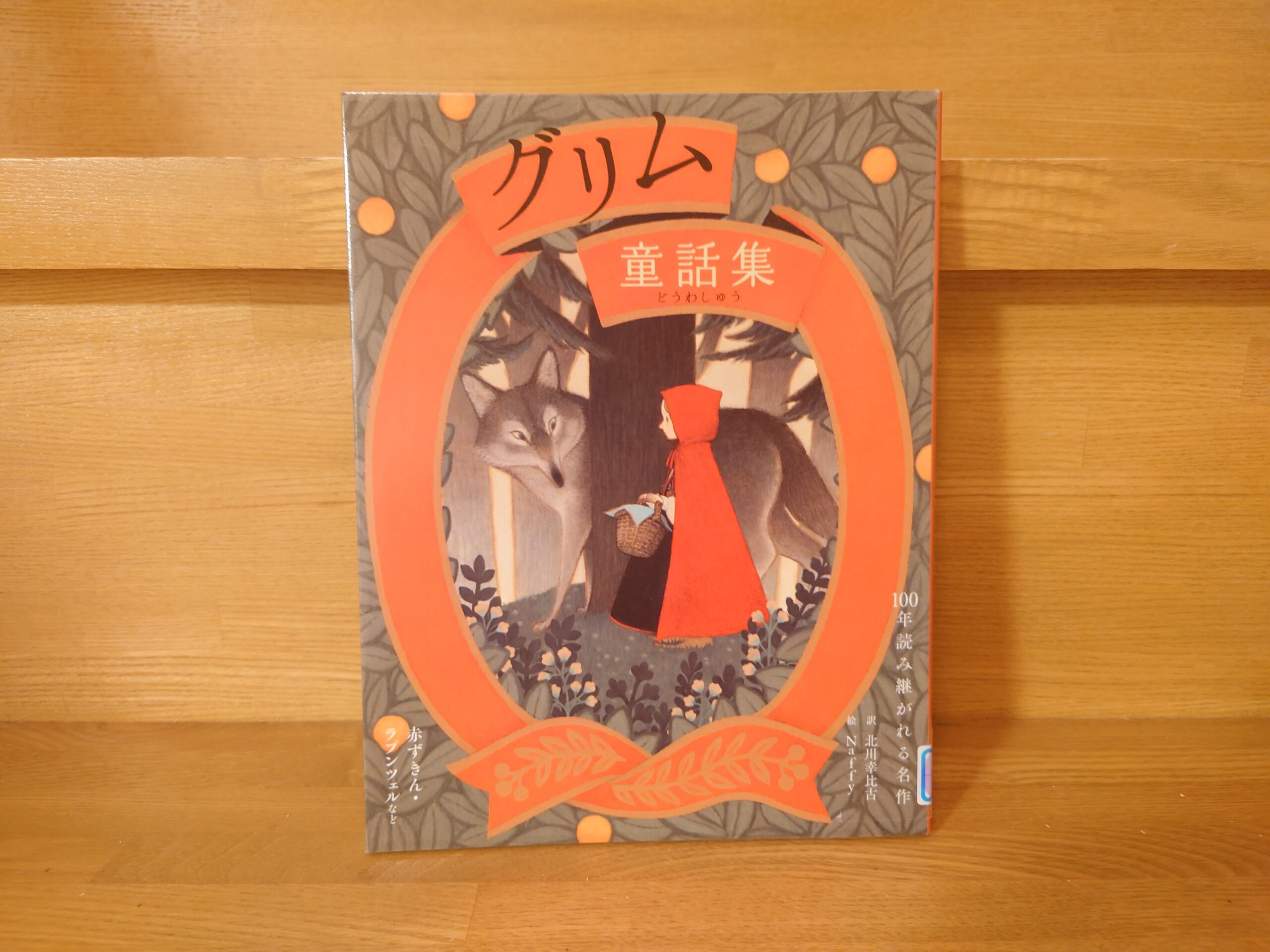
グリム童話『白雪姫』あらすじと感想~ディズニーの原作!原作との違いからわかるディズニーの驚くべき改変とは
今回ご紹介するのはグリム童話の『白雪姫』です。私が読んだのは2022年に株式会社世界文化社より発行された『100年読み継がれる名作 グリム童話集 赤ずきん・ラプンツェルなど』所収の『白雪姫』です。
『グリム童話』については以前当ブログでも「『グリム童話』と19世紀ドイツナショナリズム~メンデルスゾーン家のサロンにも来ていたグリム兄弟」の記事でお話ししました。
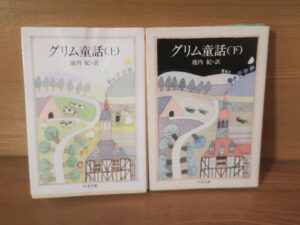

『グリム童話』で有名なグリム兄弟は19世紀中頃に活躍したドイツの学者で、『マッチ売りの少女』や『人魚姫』で有名な童話作家アンデルセンもほぼ同時代人です。
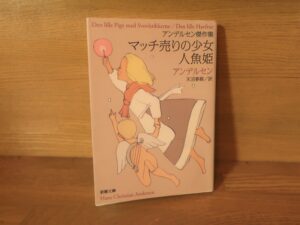
アンデルセン童話とグリム童話。
アンデルセンの童話は大人が読んでもジーンとくるようなものすごく繊細なお話がたくさんありましたが、グリム童話はどこか淡々としている印象を受けます。これはきっと、アンデルセンが自分の感受性や想像力をフル稼働して物語を創作したのに対し、グリム兄弟は学者として実際に人々が話している童話を収集して童話集を作ったという、創作過程の違い、その内容の性格の違いがあるのではないかと思われます。
今回ご紹介する『白雪姫』も私たちが想像する『白雪姫』に比べると明らかに暗く、ブラックな展開となっています。
基本的な筋は私達のよく知るディズニー映画の『白雪姫』と同じです。「かがみよ、かべのかがみよ。この国で第一のきりょうよしはだれ?」というあの問いかけが原作の柱となっています。この鏡の答えによって意地の悪いお妃様が白雪姫の美しさに嫉妬し、殺害を目論むのです。
まず、妃は狩人に銘じて白雪姫を暗殺しようとするのですが、狩人は姫を哀れに思い森へ逃がします。そして彼はそこへちょうど現れたイノシシを殺し、姫の肺と肝臓と偽って内臓を献上したのでありました。映画ではそれらが収められた箱だけの描写でしたが原作ではその肺と肝臓を塩ゆでにして妃が食べてしまいます。さすがグリム童話、バイオレンスです。もし本当に姫の肺と肝臓だったら・・・
そして間一髪危機を逃れた姫は森をさまよい、とある家に行きつきました。この家こそ我らが小人たちの家だったのでありますが、原作ではなんと、一人一人の名前もなく個性もありません。これはディズニー映画との違いを考える上で非常に重要なポイントですので後に改めてお話しします。
そして小人たちに匿われることになった白雪姫でしたが、あの鏡によってその生存がばれてしまいます。これも映画と一緒です。ただ、ここからが大きく異なります。
なんと、原作ではお妃が3度にわたって白雪姫の暗殺を決行するのです!これには私も驚きました。
1回目の暗殺は紐による窒息死を狙ったものでした。妃は物売りの老婆に変装し、美しい紐を売ると称して家の中に侵入します。そして油断した姫の胸を思いっきり締め付けました。意識を失った姫を見て死んだと判断した妃は意気揚々と引き上げます。しかしその直後に帰って来た小人たちによって姫は蘇生。妃の確認不足のため第一回目の暗殺は失敗に終わったのでした。
そして再び鏡によって姫の生存を知った妃は第2回目の暗殺作戦を決行します。紐がだめなら今度は毒殺だ!
妃はまたも物売りの老婆に変装し(前とは違うコスチュームです)、今度は美しい櫛を売りに来ました。小人たちから怪しい人は家に入れてはいけないと忠告されていたにも関わらず、またしても姫は油断して妃を家に入れてしまいます。櫛には毒が仕込まれており、それで髪をとかせば暗殺完了。妃は言葉巧みに姫の髪をとかすことに成功します。またもや姫は意識を失い、妃は意気揚々と帰還するのでありました。
ところがどっこい、今回もこの直後に小人たちが家へ帰り意識不明の姫を発見。髪に刺さっていた櫛を抜き取ると間もなく姫は意識を取り戻しました。迂闊!あまりに迂闊!妃はまたもや確認不足で暗殺を失敗したのでありました。
さあ、三度目の正直。今度こそ暗殺を成功させねばならぬ。ぬか喜びで終わるのもここまでだ。今回は即効性の強力な毒をお見舞いしてやろう。しかも、とっておきのな・・・
というわけでいよいよ我々にも馴染み深いあの毒リンゴの登場です。
ほお!・・・となればあの恐ろしい老女の変身もついにここで現れるか!と思いきや、なんと、三度目の暗殺は農家のおばさんの変装でした。挿絵の妃も何とも気のいい可愛らしいおばさんです。全然恐くない!
まあ、それでも持ってるものは致死性の毒リンゴ。かわいい顔して悪どいぜ。
妃はまたも言葉巧みに姫を騙し、ついにそのリンゴを食べさせることに成功します。今度こそやったぞ!暗殺は成功だ!
さすがの妃ももう油断はしません。しっかり死んだことを確認し、城に帰ってすぐにその死も確認しました。あの鏡が「あなたこそ一番のきりょうよし」と保証したのです。
これまで2回にわたって絶妙なタイミングで帰ってきた小人たちも、今回は間が悪かった。すでに姫は蘇生不可能。その死因も彼らにはわかりませんでした。
彼らは美しい姫の死にショックを受け三日三晩嘆き悲しみ続けます。
ですがさすがにそろそろ埋葬しなければならない・・・。ただ、姫はまるで生きているかのようにみずみずしく赤みがさしていました。その生き生きとした姿を見て、彼らはある決断をします。
彼らはガラスの棺をこしらえて山の上に運び、そこに白雪姫を横たえてずっとその番をすることにしたのです。
こうして長い月日が経ちましたが白雪姫の遺体は一向に腐ることがありませんでした。ディズニー映画ではこの辺りの説明がなされていましたが、原作では何の説明もありません。毒リンゴを食べたら死ぬはずなのです。ですが姫はなぜか死んだのに腐らずそのままであり続けました。
そしてここから王子と出会って復活してめでたしめでたしのハッピーエンドとなるのですが、原作はそう一筋縄ではいきません。
ディズニー映画では物語の一番最初に王子様と出会っており、すでに恋仲でありました。だからこそ愛する人のキスで白雪姫は蘇ります。
しかし、原作ではまだ王子様と出会ってすらいません。さらに言えば、お互いの存在すら知らなかったのです。
恐ろしいことを言いましょう。
なんと、王子様はこの白雪姫の死体を見て、「なんと美しい。私の宝物にして恋人にしよう。持ち帰らせてください」と小人たちに頼むのです。
確認します。王子様は見ず知らずの女性の死体を見て「恋人にしたい。持ち帰りたい」と言ったのです。
おぉ、何たる狂気!さすが『グリム童話』です!やはりグリムはこうでなくちゃ!2回も暗殺に失敗して最後はかわいい農家のおばさんに変装するなんてほっこり話は生ぬるい!ダークでバイオレンスな展開こそグリム童話の真骨頂!
というわけで王子様は白雪姫の棺を小人たちから半ば強引にもらい受け、城へと運んでいきます。死体を手に入れて王子様はこれから何をするつもりだったのでしょうか。まあ、それはさておき、この運搬の途中でアクシデントが発生します。道の途中で低い木に引っ掛かり、棺が大きく揺れてしまったのです。そしてそのはずみで白雪姫ののどから毒リンゴのかけらが飛び出しました。するとどうでしょう。白雪姫は眠りから目覚め、自ら棺の蓋を開けて立ち上がったのでした。
ですがこれ、よくよく考えるととてつもないホラーですよね。突然何の予兆もなく生き返ったのですから。しかも王子様のキスで生き返るというロマンチックな復活も全くなしです。
この突然の復活劇に王子様もさぞ肝を潰したかと思いきやそこは狂気のプリンス。さすがのリアクションを見せます。
「ぼくは、あなたが世界で一番好きです。ぼくといっしょに父上の城にきてください。ぼくと結婚してください」
なぜ生き返ったかに何の疑問も持たずいきなりのプロポーズ!やはり肝の入り方が違います。
こうして二人は幸せに暮らしましたとさ。で終わればハッピーエンドなのですが原作ではもうひと山残されています。
皆さんもお気づきだと思いますが、あの悪いお妃がいまだ健在なのです。ディズニー映画では岩山から落ちて亡くなってしまいましたが、原作では無事に城に帰っていたのです。
そして王子様と姫の結婚式に呼ばれることになり、しぶしぶ参加したのでありますがとてつもない終わり方をしてしまいます。これは何とも説明しがたいので直接引用したいと思います。
白雪姫と王子さまのけっこんのおしたくは、それはすばらしいものでした。
けっこん式には、あの大悪者のおきさきさまもよばれました。おきさきさまは、きれいに着かざって、あのかがみの前に立ちました。
「かがみよ、かべのかがみよ。この国で第一のきりょうよしはだれ?」
すると、かがみはこう答えました。
「おきさきさま、おきさきさまはここでは第一のごきりょうよしのお方。だけど、わかいおきさきさまは、おきさきさまより、千倍も美しい」
これを聞いて、おきさきさまは、のろいの言葉をはきちらしましたが、心配で心配で、何がなんだかわからなくなってしまいました。けっこんのいわいになど行きたくないと思いましたが、それでは、よけいじりじりして落ち着きません。それで、そのわかいおきさきさまを見にいきました。
おきさきさまは、けっこんをいわう大パーティーの会場に入っていって、わかいおきさきさまが白雪姫だと気がつきました。むねが苦しく、おそろしくなりました。
おきさきさまが立ちすくんでいると、もうそのときは、鉄の上ぐつが炭火の上にのせられていました。その上ぐつは、やっとこではさんでおきさきさまの前にさしだされました。おきさきさまは、まっ赤にやけた鉄の上ぐつをはかされて、おどりだし、ずっとおどりつづけるほかありませんでした。そして、とうとう息がたえ、ばったりたおれ死んでしまいました。
株式会社世界文化社『100年読み継がれる名作 グリム童話集 赤ずきん・ラプンツェルなど』P64-65
これで物語は終わりです。あまりに謎めいたフィナーレです。
「おきさきさまが立ちすくんでいると、もうそのときは、鉄の上ぐつが炭火の上にのせられていました。その上ぐつは、やっとこではさんでおきさきさまの前にさしだされました。」
この展開も主語が誰だか明示されていません。誰がおきさきにこのような仕打ちをしたのか不明なのです。白雪姫がそうさせたのか、王子様か。はたまた、何か超自然的な何かが嫉妬深いお妃を咎めるためにやったのか・・・
いずれにせよ、この唐突な結末は何とも言えない余韻を残すものでありました・・・
これが『白雪姫』の原作になります。
こう見てみると、ウォルト・ディズニーがいかにこの物語を魅力的に改変したかがよくわかります。
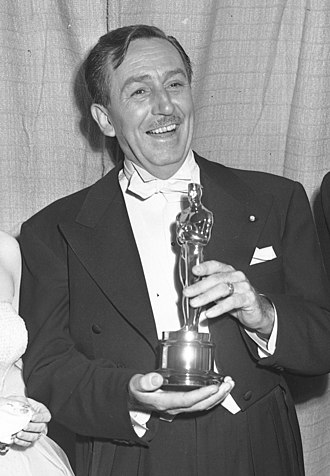
まず、先にも少し述べましたがディズニー映画では7人の小人一人一人に強い個性が与えられました。ビジュアル的にも性格的にもこれほど魅力的に描き分けたというのは当時のアニメ業界では革命的な出来事でした。しかも彼らの存在によって映画が一気に明るくコミカルなものとなりました。アメリカでは『白雪姫』は『白雪姫と七人の小人(Snow White and the Seven Dwarfs)』というタイトルが正式名称です。このタイトルにしたのもウォルト・ディズニーの強いこだわりがあったからこそでした。七人の小人の存在はそれほど重要な要素だったのです。
また、一番最初に白雪姫と王子様が出会っていること。そして姫の復活に恋人のキスというロマンチックな要素を入れたこと。さらに姫の暗殺を三回から一回に減らし、妃を恐ろしい魔女の姿に変身させることでスリルを演出しました。
そして何より、死体を愛した王子様とラストの妃への謎の罰を大胆にカットすることで、家族が安心して映画を観られるようにしました。こうした安心感ある物語作りはウォルトが最も大切にしていたことでした。
他にも改変されている箇所はあるのですがひとつひとつ見ていくのもきりがないのでこのくらいにして、この原作を基にしていかにしてディズニー映画が作られたかというエピソードをここで紹介したいと思います。
『白雪姫』は1937年に公開されました。子供時代、この映画を何気なくビデオで観ていましたがこの映画が初めて公開されたのがなんと戦前のことだったとは・・・!信じられません。
では、この映画の制作のきっかけとなった場面をニール・ゲイブラー著『創造の狂気 ウォルト・ディズニー』という伝記から見ていきます。
ウォルトは一九三三年五月に、グリム童話の『白雪姫』のアニメ化を決めた。これを選んだ理由として、「一風変わった七人のこびと」をあげ、「わたしはこびとたちに共感を覚えた。この物語には王子と少女が登場し、ロマンスがある」と述べている。
ウォルトは一九一七年一月、一五歳の頃にカンザスシティで『白雪姫』の実写映画を観たことがあり、それが最初の長編アニメに白雪姫を選んだ動機でもあった。また白雪姫の冷酷な親、少女の日々の苦しみ、未来を描くユートピア、ファンタジーの世界への逃避が、ウォルトのイメージの中では自分の少年時代と重なった。
白雪姫は彼の少年時代の寓話だった。彼は白雪姫であり、親の嫉妬、移り気な圧制におびえ、自分の世界(アニメというファンタジー)に逃避し、そこにいたわりと愛と独立と信頼を見いだす。白雪姫はウォルト・ディズニーの成長の物語であり、彼が乗り越え達成したことの実話だったのである。
一九三四年の冬、ウォルトは夜七時半から五〇人のスタッフを集めて、『白雪姫』の最初のプレゼンテーションを行った。ウォルトは真っ暗な部屋で、一本のスポットライトの中に立ち、演技を交えて白雪姫の物語を語りはじめた。白雪姫になり、時には意地悪な妃、七人のこびとになりきって、それぞれの声を使い分けた。迫真の演技は三時間に及んだ。終わった時、スタッフはすっかり心を奪われて感激し、涙を浮かべる者さえいた。
「わたしたちはわれを忘れていた。製作には三年かかったが、行き詰まるたびに、あの夜にウォルトがどのように演じたかを頭に描いた。彼の演技以外に、描きようがなかったのだ」と、あるアニメーターは語っている。
ダイヤモンド社、ニール・ゲイブラー、中谷和男訳『創造の狂気 ウォルト・ディズニー』P224-225
こうしてウォルト・ディズニーの前代未聞の挑戦が始まったのでした。
当時のアニメ業界では低予算の短編アニメが主流の時代でした。なるべくお金をかけず、クオリティーもそこそこでよし。とにかく質より量!というのが当時のアニメ業界だったのです。仮にお金をかけていいものを作ったとしても誰も高く買ってくれず、客もそうしたものをほとんど見る機会もない以上、意味がないことでした。
しかしそれを覆したのがウォルト・ディズニーだったのでした。
彼は1928年に『蒸気船ウィリー』でミッキーマウスをデビューさせてからも、採算度外視で圧倒的なクオリティーでアニメを作り続けました。他の同業他社はそんなウォルトを馬鹿にさえしていました。しかしそれでもウォルトはクオリティーにこだわり、ついには誰もやろうともしなかった長編映画の制作へと乗り出したのでした。
それまでの業界では数分の短編アニメが当たり前でした。そこからいきなり80分超の長編を作るというのです。同業他社も絶句する前代未聞の挑戦です。現代と違ってすべて手作業です。この長さのアニメを作るとなると信じがたい量の絵を描かなければなりません。しかもウォルト品質の圧倒的なクオリティーで、さらにオールカラーでです。
となると予算も天文学的なものになります。ウォルトは結局この映画に150万ドルもの資金を投入しました。通常の短編なら2万ドルあれば十分作れます。1937年当時のレートを考えるとありえない金額だったことでしょう。まさに社運をかけての大投資だったのでした。しかしこの映画はストーリーの魅力や小人たちの存在、圧倒的なクオリティーのおかげで大ヒット。あっという間に800万ドルの収入という、当時としては考えられない程の大成功を収めることになりました。
子供の頃何気なくビデオで観ていたこの作品がこれほどすごい作品だったことに今さらながら驚きました。
そしてこの映画についてもう一つぜひ紹介したいエピソードがあります。なんと、この映画はあのチャップリンとも深いつながりがあったのです。少し長くなりますが非常に興味深いお話ですのでじっくり読んでいきます。
初の長編の原作として、いろいろな神話や伝承を検討した上で、1933年5月頃にはグリム童話の『白雪姫』のアニメ化を決意していた。
しかし、スタッフも含めて周囲は長編アニメの製作に大反対した。世界恐慌後アメリカ国内では消費購買力が落ち、ドイツでヒトラーが政権を握ったことで海外市場も縮小の一途をたどっていたが、当時のディズニーはグッズ販売と短編アニメで堅実な経営をしていた。リスクを背負ってまで冒険をする時期ではないというのが周囲の共通した意見だった。
そんな中、チャップリンだけがディズニーの冒険を応援した。ディズニーは1964年にインタビューでこう回想している。
「チャーリーは私にとても優しかった。私の最初の長編アニメ映画について、他の誰もが懐疑的だった時に、彼は前に進むようにと勇気付けてくれた」
チャップリンもかつてディズニーと同じ経験をしていた。短編喜劇で大人気を博していた1910年代末に、彼は長編喜劇『キッド』の製作を始めた。配給会社は、上映すれば必ずヒットを記録する短編喜劇がたくさんあれば良かったので、長編製作に反対した。しかし、チャップリンは信念を貫き、1年以上の時間を費やして『キッド』を完成させた。結果、『キッド』は公開後数年の間に世界100カ国以上で上映され、前述の通り世界規模でほぼ同時上映された最初の映画となり、映画の歴史を変えた。
その経験から、チャップリンはディズニーに長編を作る時の心得を授けた。それは、やはり人々が共感できる主人公、ストーリーとテーマの重要性であった。
「チャーリーは私に、最上のコメディにおいて、人は主人公に同情しなければならないということを教えてくれた。主人公の行ないに笑う前に、主人公のために涙を流さなくてはいけない、と」
喜劇王から助言を受けて自信を持ったディズニーは、1934年の冬のある日、50人のスタッフをスタジオに集めた。そして、真っ暗な部屋の一本のスポットライトの下で、チャップリン仕込みの演技で3時間にわたって『白雪姫』のすべての役を最初から最後まで演じきった。独演会が終わった時、スタッフたちは涙を浮かべていたという。一同は以降3年間の製作を、常にこの時のデイズ二ーの演技を思い出しながら進めることになる。
しかし、前代未聞の大プロジェクトには、大きな難関が立ちはだかった。なにより、ディズニー社の当時の年間売上高の3分の2にあたる40万ドルもの巨額の製作予算をどうするのか(そして、製作費は最終的には150万ドルに膨れ上がる)。しかも、その間は短編アニメの製作も抑えなくてはならないので売り上げも減る。またもや兄ロイがバンク・オブ・アメリカと交渉し、1935年8月に25万ドル、36年5月に63万ドル、37年3月にも63万ドル、同年9月に32万7000ドルの融資を受けた。
このように大変な借金を抱えながら、ようやく作品は完成したが、デイズニーには長編映画を公開するためのノウハウがなかった。頼みの綱のUAは『白雪姫』の公開をしないと決定した。チャップリン以外の取締役が反対したのだ。新しい配給会社RKOとの交渉の中で、ディズニー社に不利な条件を飲まされてしまう危険性があった。
その時助けてくれたのもチャップリンだった。彼はディズニーを励まし、「君の映画は長い間生き続ける。僕のアドヴァイスは全作品の権利を自分のものにすることだ。もし所有していない権利があれば買い戻すのだ」と言って、あくまで自分の権利を保持し続けるように言った。チャップリンは『白雪姫』の成功を信じていて、「僕がやったことを知ってほしい。連中は君の映画を買い叩くかもしれない。君は最高の条件以外は受け入れるべきではない」と、自分の帳簿を開いてロイに最高の条件の数字を見せ、「これより低い数字では売るな。君はもっと取るべきだ」と言った。
そして、彼はなんと『モダン・タイムス』を配給した時の資料一式を惜しげもなくデイズニーに提供した。RKOに対してチャップリンの条件を参考に商談をすることができたディズニーは、1938年5月31日付の手紙でチャップリンに感謝の気持ちを伝えた。(中略)
チャップリンは「皮肉屋や銀行家の奴らに、『白雪姫』について君のことを過小評価させてはいけない。この作品は、君の最大のヒット作になる」と言い続け、実際にその通りになった。
デイズ二ーは、「最上のコメディにおいて、人は主人公に同情しなければならない」というチャップリンの教えを忠実に守り、主人公・白雪姫を、誰もが心を寄せる美しい姫にして継母から謂れなき迫害を受けるキャラクターとして造形した。それは同時に、ディズニーの「少年時代の寓話」でもあった。「親の嫉妬、移り気な圧制におびえ、自分の世界(アニメというファンタジー)に逃避し、そこにいたわりと愛と独立と信頼を見出す。白雪姫はウォルト・デイズニーの成長の物語」だったのだ。(中略)
キャラクターとギャグの面では、とくに七人のこびとたちにチャップリンの影響が色濃く見える。七人そろって歩いていた時に先頭が急に立ち止まって、後ろを歩いている六人が順々にぶつかるギャグは『犬の生活』に出てくるし、スニージーのくしゃみで強い風が吹いて、他のこびとたちが風に逆らって走ろうとするも前に進まない演技は、『黄金狂時代』の山小屋のシーンの完全なコピーだ。なにより、一人だけ喋らないキャラクター・ドーピーを登場させることで、サイレント喜劇のギャグを引き継いでいる。
1937年12月21日に行なわれた『白雪姫』のプレミア上映に参加したチャップリンは、七人のこびとの一人であるドーピーのことを「史上もっとも偉大な喜劇人の一人だ」と感想を述べた。やはり、アニメーションこそ自分の後継者であると認識したのだろう。
『白雪姫』は、アメリカ国内で400万ドル、海外で400万ドルという未曽有の大ヒットを記録した。公開からしばらく経って、映画ビジネスを教えてくれたチャップリンがわざわざディズニー社の帳簿を見に来たことを、ディズニーは生涯の自慢としていた。
光文社、大野裕之『ディズニーとチャップリン エンタメビジネスを生んだ巨人』P147-153
あのチャップリンがこれほどまでにウォルト・ディズニーを助け、『白雪姫』の成功を信じて疑わなかったと言うのは驚きですよね。
そして小人たちの中のドーピー(日本版ですとおとぼけ)を大絶賛しているのもチャップリンらしいですよね。私も大好きなキャラクターです。(ツンデレの怒りんぼも愛おしいですが)
このように、あのチャップリンともつながりのあった『白雪姫』、何とも恐るべき傑作であることを今やしみじみと感じます。こんなに素晴らしいものを子供時代から当たり前のように観ることができるというのは本当に幸せなことだと思います。子供向けと侮るなかれ。ディズニー、恐るべしです。
さて、ここまで『白雪姫』の原作と映画の両方についてお話ししてきましたがいかがだったでしょうか。きっともう一度映画を観たくなったのではないでしょうか。あるいは、バイオレンスでダークな原作に挑戦したくなったでしょうか。ぜひぜひ皆さんの気の向くままに楽しんで頂ければ幸いでございます。
以上、「グリム童話『白雪姫』あらすじと感想~ディズニーの原作!原作との違いからわかるディズニーの驚くべき改変とは」でした。
Amazon商品ページはこちら↓
グリム童話集 赤ずきん・ラプンツェルなど 100年読み継がれる名作
次の記事はこちら
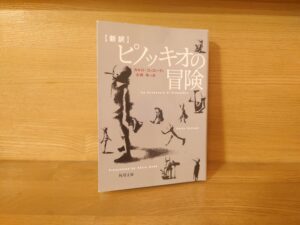
前の記事はこちら
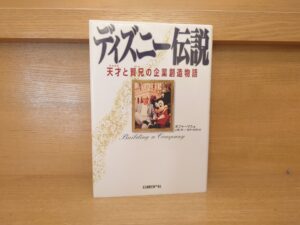
関連記事
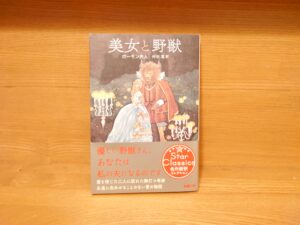

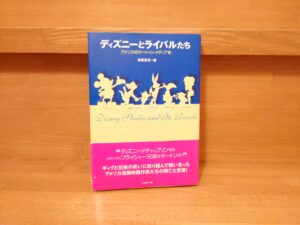
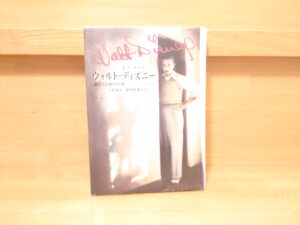
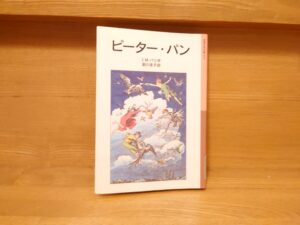

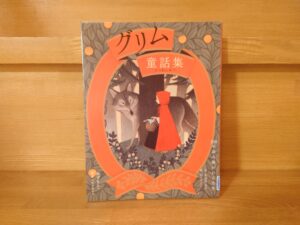

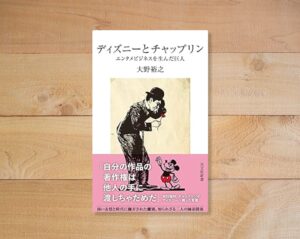
コメント